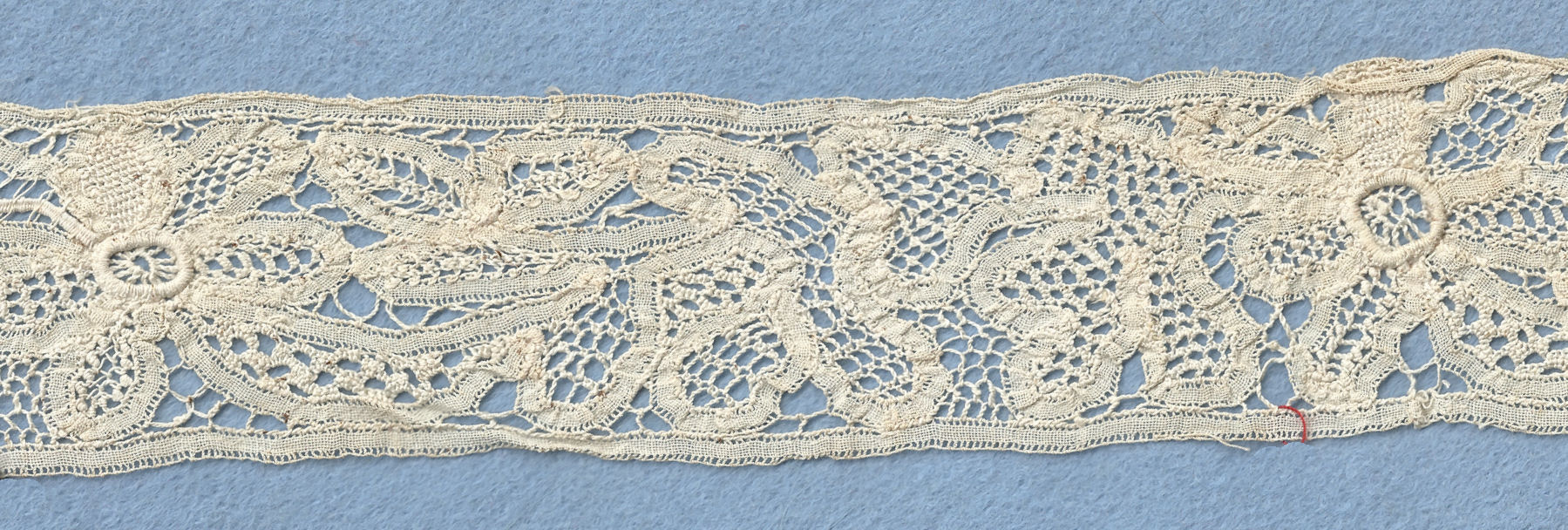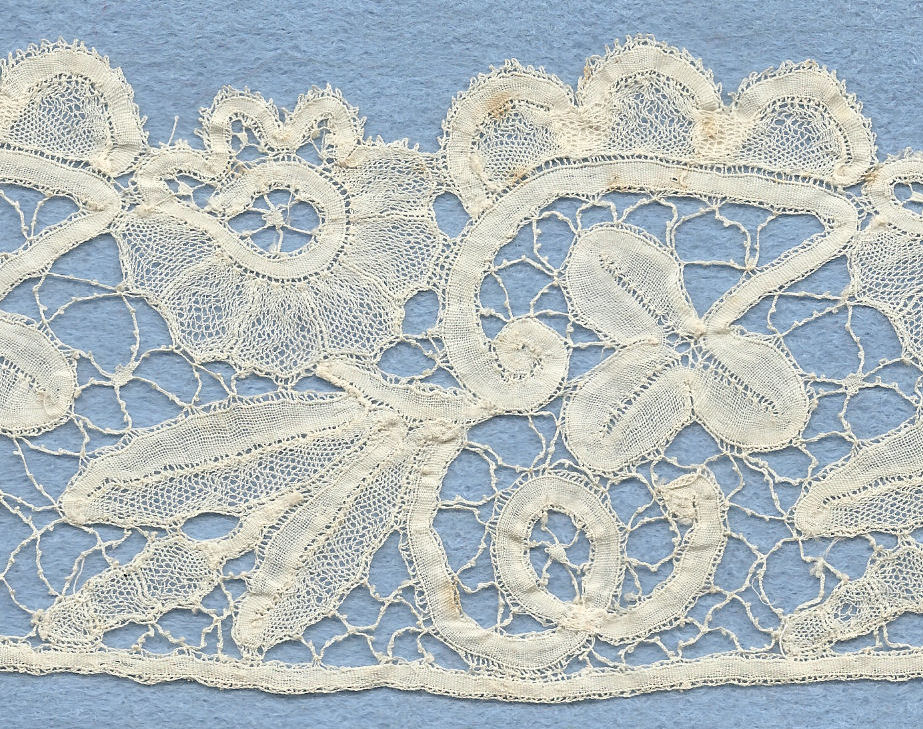|
Branscombe Lace
Branscombe lace is a type of tape lace Tape lace is made with a straight tape which is bent into the shape required and sewn into position. Various needle lace fillings may be used to fill the gaps. The tape is usually machine made. This type of lace is also known as mixed tape lace, o ... made in Branscombe in Devon. It was probably introduced by John Tucker in the late 1860s as the market for Honiton lace started to decline. Typical of Branscombe lace are the edging of buttonholed scallops, bars decorated with nibs (tiny buttonholed rings), woven spider wheels and a variety of fillings. References {{lace_types Tape lace Economy of Devon ... [...More Info...] [...Related Items...] OR: [Wikipedia] [Google] [Baidu] |
Tape Lace
Tape lace is made with a straight tape which is bent into the shape required and sewn into position. Various needle lace fillings may be used to fill the gaps. The tape is usually machine made. This type of lace is also known as mixed tape lace, or mixed lace, as it uses more than one technique: one in making the tape, and a different technique for the fillings and joins. This should be distinguished from bobbin tape lace, which is a type of bobbin lace where the tape and the rest of the lace is made at the same time using bobbins, so only one technique is used. The 19th century tape laces varied from well-worked versions with a variety of filling stitches to those where the tapes were simply joined with a few needle-made bars. Making tape laces was a popular craft and patterns were widely available in shops and magazines. However, tape lace was also developed on a professional basis in some places, such as Branscombe in Devon. Types of tape lace include Renaissance, Battenberg ... [...More Info...] [...Related Items...] OR: [Wikipedia] [Google] [Baidu] |
Branscombe
Branscombe is a village in the East Devon district of the English County of Devon. The parish covers . Its permanent population in 2009 was estimated at 513 by the Family Health Services Authority, reducing to 507 at the 2011 Census. It is located within the East Devon Area of Outstanding Natural Beauty, overlooking Lyme Bay. Branscombe has one of the South West's most scenic bus routes. AVMT Buses ruservice 899from Seaton to Sidmouth via Beer and Branscombe. History The name of the parish is probably Celtic in origin. It is made up of two words, "Bran" and "cwm". Bran is a well established Celtic personal or tribal name that may also mean "black" or "crow black". Cwm is a topographical term still in use in English as well as modern Welsh to describe a steep-sided hollow or valley. Thus the name may derive from the first Celtic family or tribe to take possession of the land, probably from the Dumnonii tribe, sometime between 2700 and 2000 BC. From the 17th to the 19th ... [...More Info...] [...Related Items...] OR: [Wikipedia] [Google] [Baidu] |
Honiton Lace
Honiton lace is a type of bobbin lace made in Honiton, Devon, in the United Kingdom. Historical Honiton lace designs focused on scrollwork and depictions of natural objects such as flowers and leaves. Characteristics Honiton lace is a part lace. Its ornate motifs and complex patterns are created separately, before being sewn into a net ground. Common motifs include daisies, roses, shamrocks, ivy leaves, butterflies, lilies, camellias, convolvulus, poppies, briony, antwerp diamonds, trefoils, ferns, and acorns. Origin and history The art of making lace is rumored to have been brought to Honiton, England by Flemish refugees in the mid-to-late 16th century. An old tombstone in the town is inscribed with information about one James Rodge who is described as a “bone lace seller” who died in 1617; it is not known whether he emigrated from Flanders or not. In the early period (approx. 1620-1800), sprigs of various designs were worked separately from the net ground by hand, ... [...More Info...] [...Related Items...] OR: [Wikipedia] [Google] [Baidu] |
Tape Lace
Tape lace is made with a straight tape which is bent into the shape required and sewn into position. Various needle lace fillings may be used to fill the gaps. The tape is usually machine made. This type of lace is also known as mixed tape lace, or mixed lace, as it uses more than one technique: one in making the tape, and a different technique for the fillings and joins. This should be distinguished from bobbin tape lace, which is a type of bobbin lace where the tape and the rest of the lace is made at the same time using bobbins, so only one technique is used. The 19th century tape laces varied from well-worked versions with a variety of filling stitches to those where the tapes were simply joined with a few needle-made bars. Making tape laces was a popular craft and patterns were widely available in shops and magazines. However, tape lace was also developed on a professional basis in some places, such as Branscombe in Devon. Types of tape lace include Renaissance, Battenberg ... [...More Info...] [...Related Items...] OR: [Wikipedia] [Google] [Baidu] |


